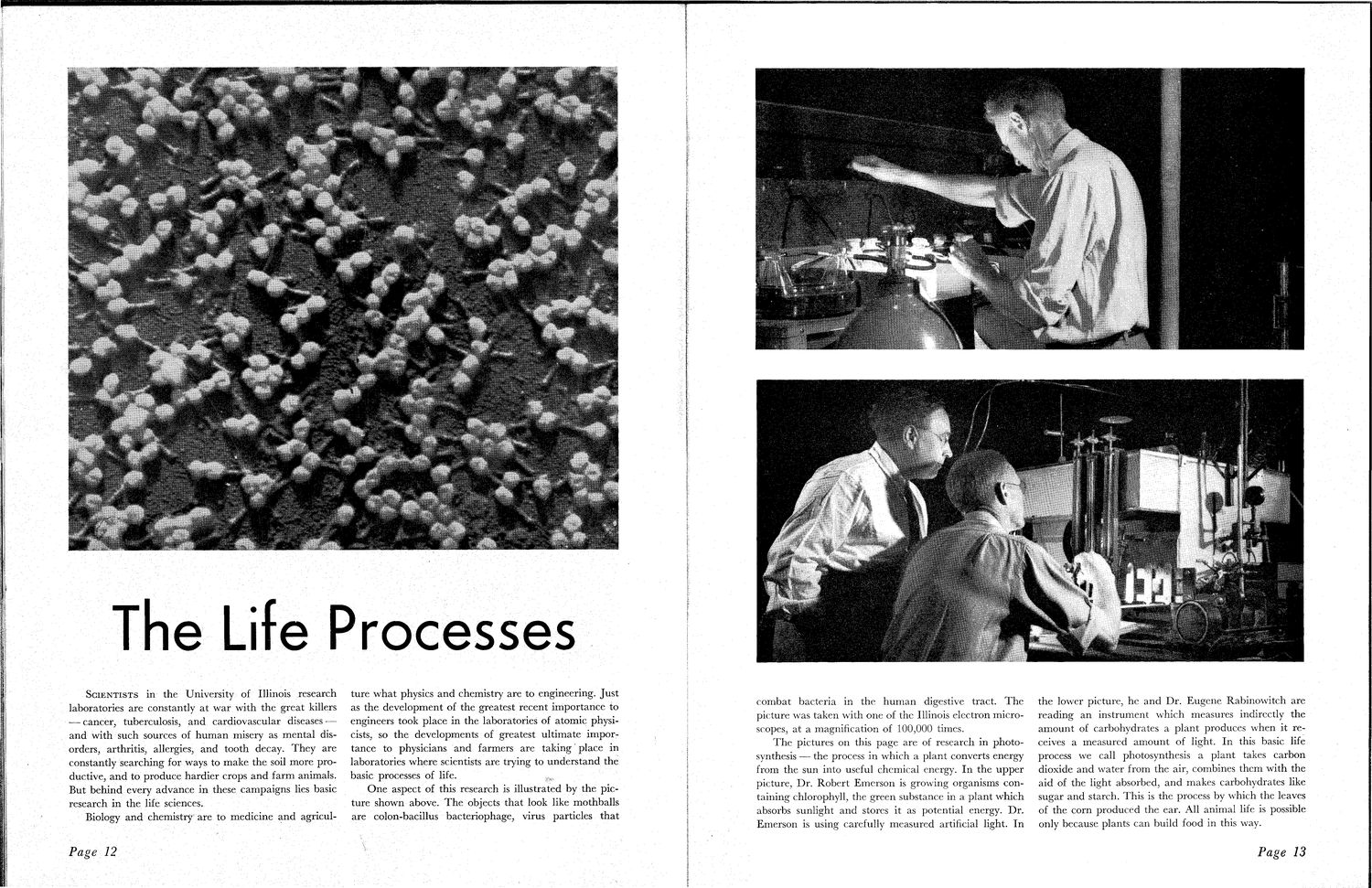| |
| |
Caption: Book - Research on Campus (1949)
This is a reduced-resolution page image for fast online browsing.

EXTRACTED TEXT FROM PAGE:
The Life Processes SCIENTISTS in the University of Illinois research laboratories are constantly at war with the great killers — cancer, tuberculosis, and cardiovascular diseases — and with such sources of human misery as mental disorders, arthritis, allergies, and tooth decay. They are constantly searching for ways to make the soil more productive, and to produce hardier crops and farm animals. But behind every advance in these campaigns lies basic research in the life sciences. Biology and chemistry are to medicine and agriculture what physics and chemistry are to engineering. Just as the development of the greatest recent importance to engineers took place in the laboratories of atomic physicists, so the developments of greatest ultimate importance to physicians and farmers are taking place in laboratories where scientists are trying to understand the basic processes of life. One aspect of this research is illustrated by the picture shown above. The objects that look like mothballs are colon-bacillus bacteriophage, virus particles that combat bacteria in the h u m a n digestive tract. The picture was taken with one of the Illinois electron microscopes, at a magnification of 100,000 times. T h e pictures on this page are of research in photosynthesis •— the process in which a plant converts energy from the sun into useful chemical energy. In the upper picture, Dr. Robert Emerson is growing organisms containing chlorophyll, the green substance in a plant which absorbs sunlight and stores it as potential energy. Dr. Emerson is using carefully measured artificial light. In the lower picture, he and Dr. Eugene Rabinowitch are reading an instrument which measures indirectly the amount of carbohydrates a plant produces when it receives a measured amount of light. In this basic life process we call photosynthesis a plant takes carbon dioxide and water from the air, combines them with the aid of the light absorbed, and makes carbohydrates like sugar and starch. This is the process by which the leaves of the corn produced the ear. All animal life is possible only because plants can build food in this way. Page 12 Page 13
| |